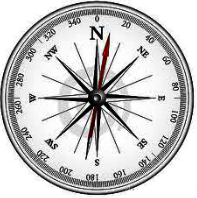- Books Name
- CBSE Class 6 Science Book
- Publication
- Param Publication
- Course
- CBSE Class 6
- Subject
- Science
The magnetic campass
When people think of instruments that help with direction finding, the first one that strikes to mind is probably the magnetic compass. It is the oldest instrument for navigation and has been a vital tool for navigators at sea for centuries. The compass allows ships to steer a selected course. By taking bearings of visible objects with a compass, the navigator is also able to fix a ship’s position on a chart.

First time, it used by chinese people. The Chinese were probably aware that an iron bar stroked with a lodestone acquired a directional north-south property as long as 2000 years ago. However, the precise date at which this knowledge was used to create the first magnetic compass is unknown. By the 10th century, the idea had been brought to Europe, probably from China, by Arab traders. Magnetic compasses of a very simple kind were certainly in use in the Mediterranean as early as the 12th century. However, early compasses were not very reliable. Although the magnetic compass was in general use in the Middle Ages, little was known about precisely how it worked.
A compass is an extremely simple device. A magnetic compass (as opposed to a gyroscopic compass) consists of a small, lightweight magnet balanced on a nearly frictionless pivot point. The magnet is generally called a needle. One end of the needle is often marked “N,” for north, or coloured in some way to indicate that it points toward north. On the surface, that’s all there is to a compass.
- Books Name
- Class 6 Science Book
- Publication
- PathSet Publications
- Course
- CBSE Class 6
- Subject
- Science
Finding Directions
Another great property of a magnet is that it can prove extremely helpful in navigating directions. This is because a freely suspended magnet always points in the North-South direction.
This property of magnet is used to make a compass. A magnetic needle is placed inside a box with directions marked on it. It is allowed to rotate freely so that when the compass is kept at the position of rest, the needle points towards the north and south direction.

 Param Publication
Param Publication
 PathSet Publications
PathSet Publications
